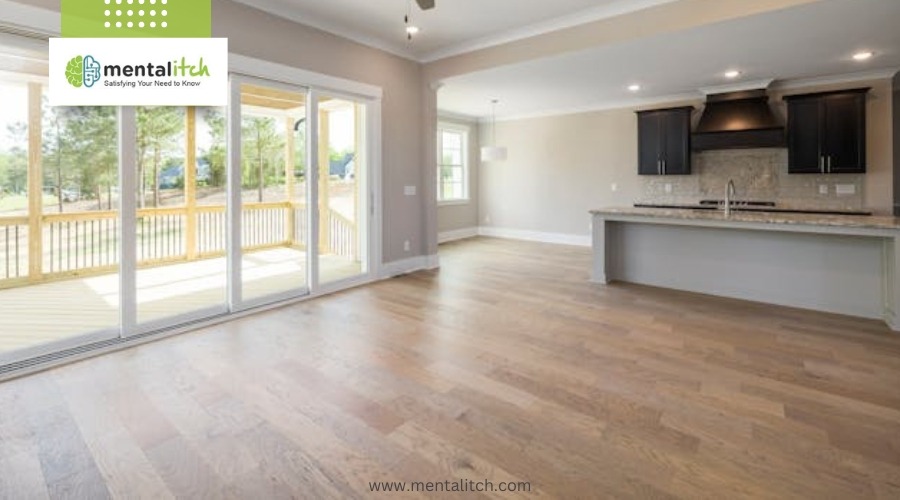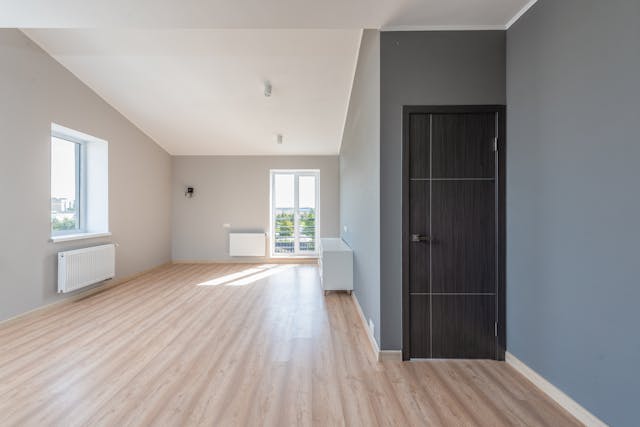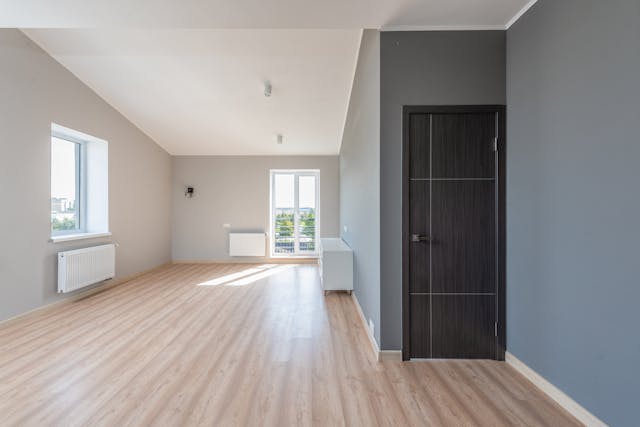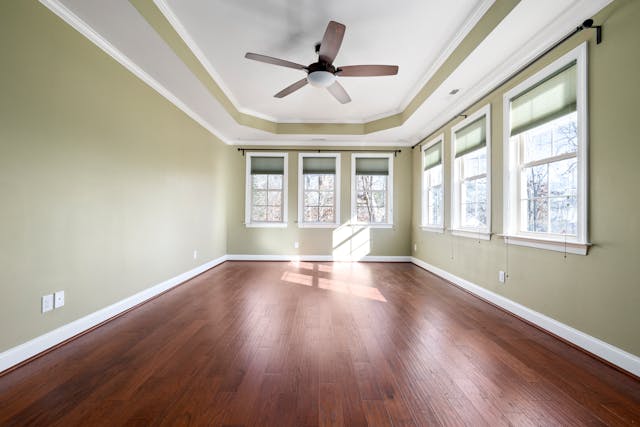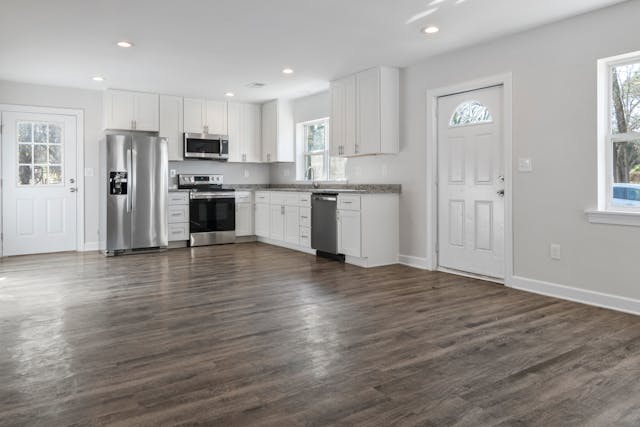When you’re deciding on the perfect flooring, you’re not just choosing a product; you’re selecting an element that will define your space, influence your home’s ambiance, and withstand daily life’s demands. It’s essential to consider not only what catches your eye but also what fits your lifestyle and budget. Whether you lean towards the warmth of hardwood, the comfort of carpet, or the durability of tile, each option has its set of advantages and challenges.
As you stand at this crossroads, remember the decision you make will lay the foundation for your home’s aesthetic and functional appeal for years to come. Let’s explore further how to navigate this crucial choice.
Assessing Lifestyle Needs
To choose the ideal flooring for your home, it’s essential to first assess your lifestyle needs, considering factors such as high traffic areas, moisture exposure, and maintenance preferences. If your home is a hub of activity with kids and pets running around, you’ll need durable flooring that can handle the wear and tear. Porcelain tile stands out as a sturdy option, especially for kitchens, bathrooms, and other moisture-prone spaces. It’s not just about durability; the level of maintenance you’re willing to commit to plays a crucial role too.
You’d want to opt for flooring that’s easy to clean and maintain, making your life simpler. Porcelain tile, being low maintenance, fits the bill perfectly for busy households. It’s also pet-friendly and children-friendly, resisting scratches and spills better than many other materials. Plus, it comes in a variety of designs to match your aesthetic preferences.
When selecting flooring, consider how it aligns with your lifestyle requirements. Whether it’s a high traffic living room or a damp bathroom, the right choice will blend seamlessly with your daily activities, ensuring both functionality and style without compromising on maintenance needs.
Understanding Material Options
Exploring your flooring options is a crucial step in making an informed choice that suits your home’s needs and style. Each material offers unique benefits and costs, so understanding what’s on offer can help you navigate your decision effectively.
- Hardwood Flooring: Offers enduring appeal with a cost of $5-$10 per sq ft installed. It’s durable but consider engineered wood as a slightly more affordable option at $4-$9 per sq ft.
- Laminate Flooring: Priced at $3-$7 per sq ft installed, it’s scratch and dent-resistant and DIY-friendly. However, it can’t be refinished, limiting its lifespan compared to hardwood.
- Vinyl Flooring: Costing $2-$6 per sq ft, this waterproof option mimics real wood or stone but may lack the authentic feel. It’s a practical choice for areas prone to moisture.
- Carpet Flooring: Ranges from $3-$10 per sq ft installed, offering comfort and stain resistance. Regular cleaning is essential to prevent dirt buildup.
- Stone Flooring: Priced at $3-$7 per sq ft installed, stone is unique and durable. It’s ideal for creating a statement but requires professional installation and sealing to maintain its beauty.
Choosing between these options involves balancing cost per sq ft, whether you’re seeking something DIY-friendly, waterproof, or specifically durable.
Comparing Durability and Maintenance
When selecting the perfect flooring for your home, considering how different materials hold up over time and what kind of maintenance they require is crucial. Porcelain tile, known for its durability and scratch-resistant qualities, stands out as an ideal option for high-traffic areas such as kitchens and mudrooms. Its resilience ensures your floors remain pristine even under the most demanding conditions.
Luxury vinyl plank flooring emerges as a durable and water-resistant choice, especially for basements. It’s not only easy to install but also expertly mimics the look of real wood, blending functionality with aesthetics. For dining, living, and family rooms, engineered wood flooring presents a durable and cost-effective solution. Thanks to pre-finished planks and tough factory-applied finishes, it’s designed to withstand the rigors of daily life.
However, cork flooring, despite being soft and water-resistant, mightn’t be the best fit for high-traffic areas due to its susceptibility to fading and damage. It’s more suited for specific spaces where its unique qualities can be appreciated without the risk of premature wear. Remember, the goal is to choose flooring that combines durability with minimal maintenance, ensuring your home looks beautiful for years to come.
Budgeting for New Flooring
Understanding your budget is crucial when selecting new flooring for your home, as costs can vary widely based on material and quality. Before diving into the vast world of flooring options, it’s essential to get a clear picture of what you can afford. Here’s how you can navigate budget ranges effectively:
- $2.00 or less: This budget-friendly range includes options like bargain laminate flooring, sheet resilient flooring, and basic ceramic tiles. Ideal for those looking to refresh their space without breaking the bank.
- $2.00-$5.00: In this mid-range category, you’ll find domestic solid hardwood, engineered wood, higher-quality laminate, and luxury vinyl tile. These materials offer a balance between durability and cost.
- $5.00 or more: For those with a higher budget, premium hardwoods, exotic woods, and top-tier laminate or luxury vinyl flooring become accessible. These options often deliver unparalleled aesthetics and longevity.
Evaluating the cost implications of different flooring materials within your budget range is critical. Whether you’re eyeing bargain laminate flooring or considering the splurge on premium hardwoods, understanding the financial commitment involved helps in making an informed decision that aligns with both your desires and budget.
Installation Considerations
After considering your budget for new flooring, it’s also vital to think about the installation process and its requirements. The type of subfloor in your home can greatly influence which flooring options are suitable. For example, certain types of wood or engineered flooring may not be compatible with your existing subfloor, leading to potential issues down the line.
Installation methods vary significantly between materials like wood, tile, and vinyl. Some options might be DIY-friendly, allowing you to save on professional installation costs. However, it’s crucial to assess your own skills and the time and effort required for the project. Larger rooms or complex layouts could significantly increase the complexity of the job.
Always consult the flooring manufacturer’s recommendations to ensure proper installation. This guidance can help you decide whether to tackle the installation yourself or to hire professionals.
| Flooring Type | Installation Method | DIY-friendly |
|---|---|---|
| Wood | Nail-down | No |
| Tile | Glue-down | Moderate |
| Vinyl | Floating | Yes |
Considering these factors will help you make an informed decision about which flooring is best for your home, balancing between aesthetics, practicality, and the feasibility of installation.
Additional Details
- Be sure to check out options to purchase a carpet cleaner.
- Make sure you vacuum regularly.
- You can also get help with specific needs like finding a specialist in limestone restoration.
- Be sure to consider options such as tile as well.
Conclusion
In conclusion, finding the perfect flooring for your home boils down to knowing your lifestyle, understanding your options, and balancing durability with maintenance. Remember, it’s crucial to stick to your budget and consider the installation process. Whether you’re drawn to the warmth of hardwood, the elegance of tile, or the comfort of carpet, make sure it aligns with your life and style.
Take your time, do your research, and you’ll land on the right choice for your space.

